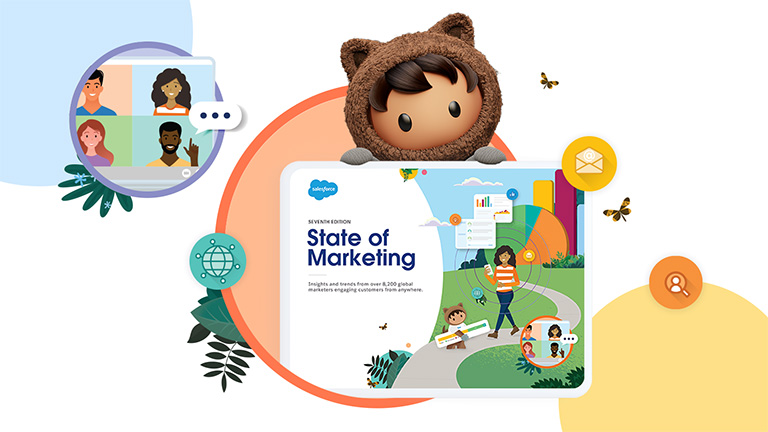Brands have long tried to understand consumer psychology deeply to sell more, to sell better. What’s new is how they are tapping into technologies to influence consumer behaviour at scale across multiple touchpoints. The same technologies and channels that have made customer journeys more complex can also be used innovatively to shape brand perceptions and elicit action.
Brands need a deep understanding of their customers to employ the right psychological triggers through their marketing, service, and sales efforts. This understanding can come from analysing customer data to reveal patterns in their behaviour. These insights are then incorporated into business strategies to create brand advocates over time. Here’s how:
1. Reciprocity
Humans are highly likely to respond to positive experiences and reciprocate favourably. In Salesforce's State of the Connected Customer report, 80% of customers even say experiences are as important as the products and services offered by a company.
So, before asking customers to buy, win them over with helpful information or additional benefits to create interest and get them to be invested in you. But for what you offer to be of true value and relevance to customers, you need to get a good sense of their preferences.
Use tools that allow you to identify customers across digital channels, track their online behaviour, transaction data, and connect these with their offline experiences to understand their needs and biases. This understanding can be used to create meaningful experiences – whether through personalised deals and free trials, or FAQs and how-to blogs.
2. Authority
People are more likely to trust brands they consider as competent – those offering greater knowledge, experience, or expertise. What’s more, 95% of customers say their trust in a brand makes them more likely to remain loyal to it.
Buyers are likely to sit up and take notice when you consistently establish your competency. Here are some effective ways you can prove your worth to establish authority:
- Innovation: Customers always appreciate signs of growth. By investing in R&D, adopting design thinking principles, and continuously implementing customer feedback, you can continually refine your offerings to meet and exceed expectations.
- Competitor analysis: It is important to understand your competition to know where you stand in the market. Using competitor analysis tools can help you get insights into your competitors’ strengths, weaknesses, and strategies, and find new ways to outsmart them. And if you can’t beat them, find ways to join hands with them for mutual benefit.
- Internal reporting: Also use data analytics tools to measure the success of your own efforts. For instance, you can monitor the impact of your pricing strategy on win rates or profit and course-correct as needed.
- Content marketing: Sharing valuable information and thought leadership content can help you build authority over time. Also, consider optimising your content for SEO/SEM purposes to increase visibility online.
3. The paradox of choice
Offer too many choices, and consumers get confused instead of happy. This particularly applies to the e-commerce space – where people may browse and add items to their cart but then abandon it. The trick is to offer neither too little nor too much, by understanding exactly what buyers are looking for.
You can truly leverage the large online shopper base in India by easing their decision-making process through hyperpersonalisation. Build an ecommerce platform that provides highly personalised product recommendations, predictive sorting, and tailored searches based on each customer’s preferences and buying behaviour.
You can further enhance the buyer experience by providing dynamic content, like customised look books or styling tips on your fashion ecommerce platform. Such content can also improve chances of cross- and upselling.
4. Confirmation bias
Consumers relate to (and favour) brands that reiterate their values and beliefs in a language that resonates with them. There are many ways you can build a connection with your customers and address their need for affirmation, such as:
- Creating customer-first digital experiences – online communities and forums – where customers can connect with like-minded people
- Displaying honest reviews and customer testimonials on your product pages and ecommerce sites
- Leveraging influencer marketing to create traction for your offerings and brand
Salesforce helps brands understand consumer behaviour and build loyalty
Built with the customer at its heart, Salesforce Customer 360 makes creating brand advocates easier by helping you deeply understand your customers and create business strategies that increase loyalty and retention.
Salesforce Customer 360 unifies data from multiple sources to provide a shared, holistic customer view to the entire organisation. Salesforce’s in-built AI engine helps your marketing, sales, service, ecommerce, and other teams to make better sense and use of this data. With the right tools, they can:
- Create comprehensive audience segments based on custom factors
- Easily find new leads, and prioritise and nurture those most likely to convert
- Drive valuable, personalised interactions across channels
- Listen to customer cues online to know what they are saying about you
- Map engagement with specific campaigns or channels to better understand consumer behaviour
- Use insights to increase data-driven decision making




